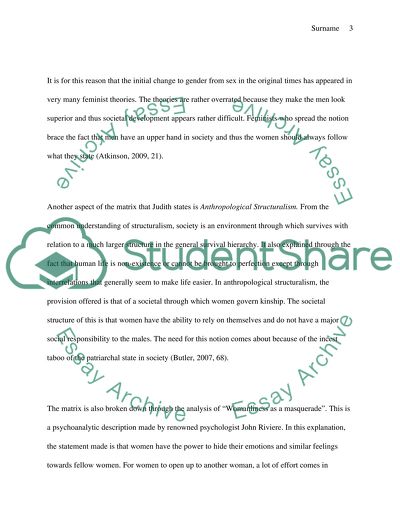Cite this document
(“Essay on Chapter 2 of Gender Trouble by Judith Butler”, n.d.)
Retrieved from https://studentshare.org/gender-sexual-studies/1447243-essay-on-chapter
Retrieved from https://studentshare.org/gender-sexual-studies/1447243-essay-on-chapter
(Essay on Chapter 2 of Gender Trouble by Judith Butler)
https://studentshare.org/gender-sexual-studies/1447243-essay-on-chapter.
https://studentshare.org/gender-sexual-studies/1447243-essay-on-chapter.
“Essay on Chapter 2 of Gender Trouble by Judith Butler”, n.d. https://studentshare.org/gender-sexual-studies/1447243-essay-on-chapter.


